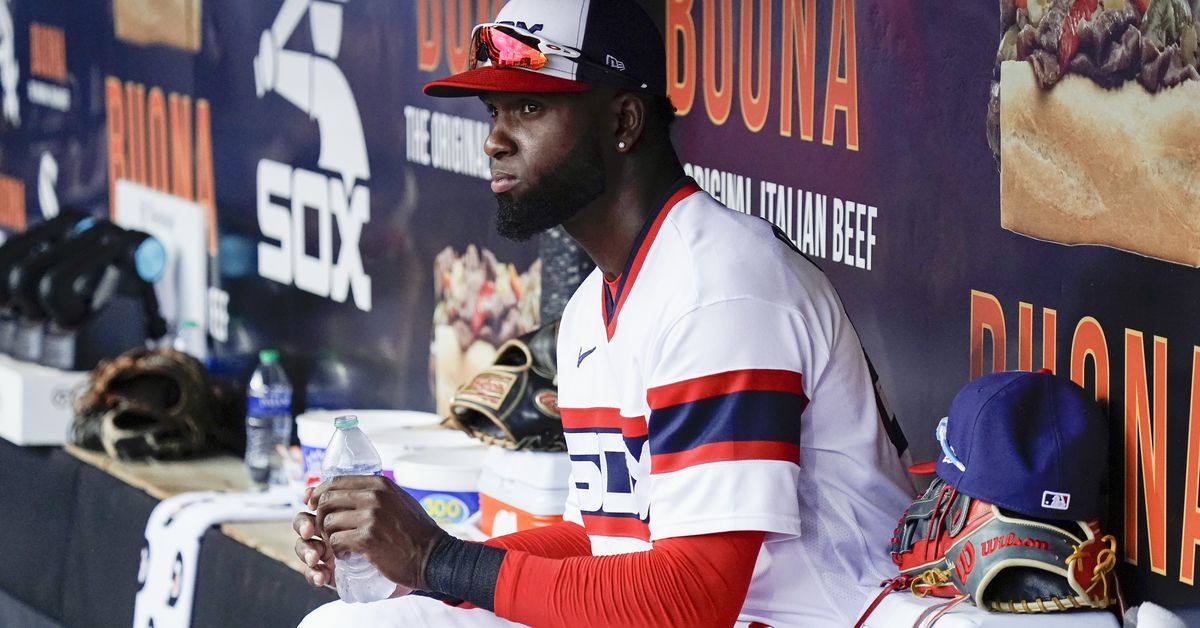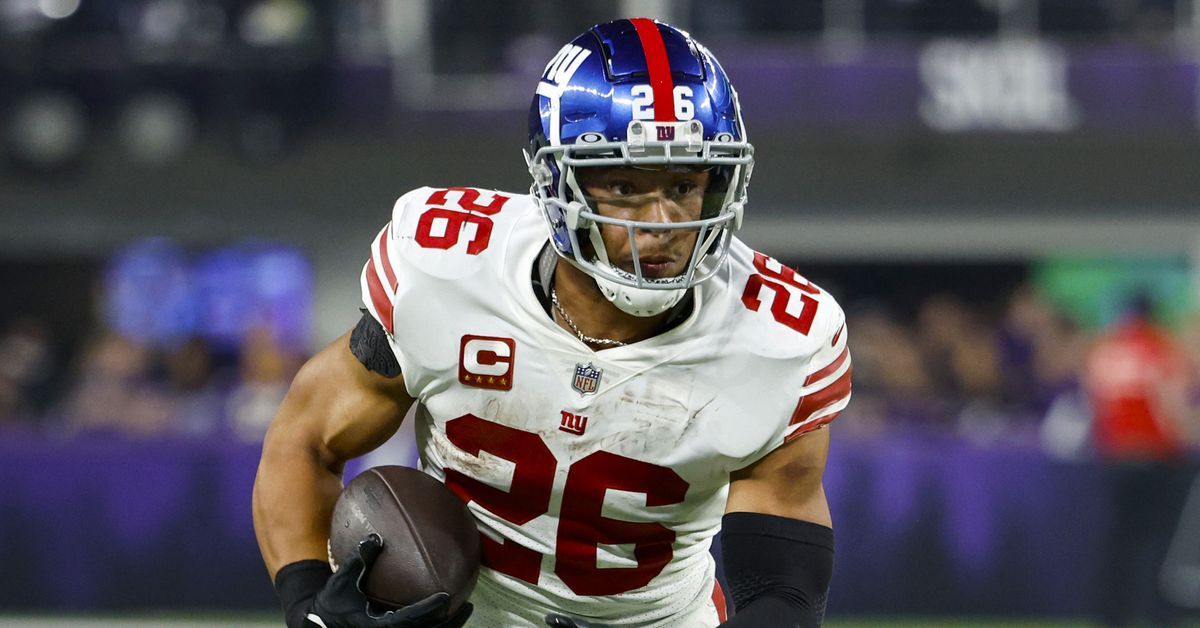Braves start second half against underperforming White Sox
The Atlanta Braves look to come out of the break strong as they host the White Sox for a three-game series in Atlanta. After establishing themselves as one of the most exciting young teams in baseball in 2020 and 2021, the White Sox have fallen off over the past two seasons, to the point where they should probably be major sellers at the Trade Deadline.
The White Sox didn’t come in to 2023 as division favorites, with a 79-win projection, but they shouldn’t have been anywhere near as bad as they have been, given that they’re now projected to come away with just 72 victories. The position player crew has been bottom-five, with poor defense and an awful offense. The rotation’s been okay, but the bullpen has been horrid, so the pitching isn’t on the mark either.
One player that has struggled mightily for them this season is Tim Anderson. The two-time All-Star and former batting champion has been one of the worst players in baseball, sporting a -1.1 fWAR and a 43 wRC+. He has been emblematic of his entire White Sox teammate set, who went from 93-69 and a team of the future candidate, to a 38-54 tire fire in two seasons. Luis Robert Jr. is the only White Sox batter with an fWAR above 1, which is a bad sign for a team with playoff aspirations entering the season. Robert has been the one bright spot on the team with a 3.7 fWAR and 143 wRC+, but his availability is in question due to an injury suffered during the Home Run Derby, which kind of sums up the season on the South Side.
On the pitching end, Dylan Cease and Lucas Giolito have been good, Lance Lynn has been okay, and there are a few interesting relief seasons (like Gregory Santos with 1.0 fWAR in just 45 2⁄ 3 innings), but the rest is boring or horrific. The White Sox have already used 24 pitchers this season, and only 11 of them have more than 0.0 fWAR.
Meanwhile, the Braves have eight batters with an fWAR above 1 and have taken the league by storm since the beginning of June. They have the best record in baseball at 60-29 and Ronald Acuña Jr. has been by far the best player in the National League. This season has been everything a Braves fan could ask for so far, besides a couple injuries to the rotation.
However, even that is getting better, as Max Fried is set to make his second rehab start and should be back soon. Getting Fried back would make an already dangerous Braves team even scarier.
Friday, July 14, 7:20 p.m. ET (Bally Sports Southeast)
Michael Kopech (16 GS, 86 IP, 26 K%, 13.1 BB%, 35.5 GB%, 4.08 ERA, 5.58 FIP)
Michael Kopech has yet to break out in the way that many had predicted for him. In fact, he has taken a step back this season, especially if you look under the hood. His 4.08 ERA is solid, if disappointing, but his 5.58 FIP is alarming, and an xFIP of nearly 5.00 doesn’t help matters. This comes from his propensity to walk hitters and give up home runs. His 13.1 percent walk rate is well below average, as is his 1.78 HR/9. He gets barreled up at a 14.2 percent clip, a mark that ranks in the very bottom percentile for pitchers. That is not a recipe for success, even if you have swing and miss stuff, which he has. Kopech gets a lot of whiffs on his fastball, with the 29.5 percent whiff rate on the pitch being very high.
Kopech will be returning from a stint on the Injured List with a shoulder issue to make this start. He looked like he was turning the corner with a great four-start stretch in mid-May and early June, but each of those games came against a fairly weak offense, and he’s been knocked around horribly in his last four outings prior to the injury. He already has three starts this season with more walks than strikeouts, and two of those have come in his last three outings.
Charlie Morton (17 GS, 97 IP, 26.1 K%, 9.9 BB%, 46.8 GB%, 3.43 ERA, 3.79 FIP)
Charlie Morton had a very good start to finish off what was a quality first half for the veteran right-hander. After recent struggles going deep into games, Morton answered those concerns by going 6 1⁄ 3 innings while only allowing one run against an elite Rays lineup. He gets outs with a combination of ground balls and strikeouts. His 46.8 GB percent is a solid number, even if it is not at Bryce Elder levels. His 26.1 percent strikeout rate is also above average, most of which he gets on his devastating curveball which he throws nearly 45 percent of the time. Even with the volume, it does not hamper the effectiveness of the pitch with batters hitting .167 against it, with a 41.3 whiff rate. Despite making his debut in 2008 and having experience in both leagues, Morton does not have a large sample size against the White Sox, having only made three starts. He has been successful though, pitching to a 3.57 ERA, 2.88 FIP, and 3.58 xFIP in 17 2⁄ 3 innings.
Saturday, July 15, 7:15 p.m. ET (FOX)
Lance Lynn (18 GS, 103 IP, 27.9 K%, 8.1 BB%, 39.1 GB%, 6.03 ERA, 4.81 FIP)
Lance Lynn has had a strange season. He has been striking out more batters than ever before, but he has struggled massively on the ERA side, while his peripherals are boringly okay on an FIP basis and quite strong in terms of xFIP. Essentially, Lynn’s xFIP has been in the 87-89 range in each of the past three seasons, but his homer allowance has shot way up over that span. This is not a problem you want to have against the Braves, who lead baseball in home runs. He is coming off one of his best starts of the season where he went seven scoreless innings with 11 strikeouts and only one hit against Toronto. He also had a 16 strikeout performance a few starts back, so Lynn is still a great pitcher on his day, but he is also prone to a blowup start. He has been good against the Braves in his career with a 2.84 ERA, 2.77 FIP, and 3.63 xFIP in 38 innings.
Spencer Strider (18 GS, 104.2 IP, 38.9 K%, 8 BB%, 32.6 GB%, 3.44 ERA, 2.84 FIP)
Spencer Strider had yet another dominant performance in his last start before the All-Star Break, going 6 1⁄ 3 scoreless innings while striking out 11 Rays. After a blip in the middle of June, it is safe to say that Strider is back. He is putting up ridiculous strikeout numbers, with his 14.27 K/9 being an unprecedented mark for a starter. He has done this mainly with a devastating fastball-slider combo, but he has been mixing in the changeup a lot more this season. The fastball is the pitch that sets everything up, with so much velocity and movement that hitters have to sit on the pitch. This leads to Strider getting tons of swings and misses with his soft stuff. Strider is one of the elite arms in the game and is a couple of dominant starts away from re-establishing himself in the Cy Young mix.
Sunday, July 16, 1:35 p.m. ET (Bally Sports Southeast)
Dylan Cease (19 GS, 102.2 IP, 27.5 K%, 9.4 BB%, 39.5 GB%, 4.30 ERA, 3.78 FIP)
In a team full of disappointments, Dylan Cease has been one of the bigger underperformers given where expectations were, but his season has been more than fine overall anyway. Cease finished second in AL Cy Young voting and had a 2.20 ERA, with worse but still great peripherals. This year his ERA is over two runs higher and his velocity is down. His FIP- has gone from 75 to 86, but his xFIP- really hasn’t budged much, from 89 to 92. He has lost 1.4 MPH on his fastball this season, which has made the pitch slightly worse in all metrics. This has led to his strikeout rate being down almost three percent.
That said, Cease has done much much better over his past six starts, which have had an 85 ERA-, 64 FIP-, and 69 xFIP-. Only one of those six outings has been bad, and he’s had nearly five strikeouts to every walk in that span.
Kolby Allard (2 GS, 10.2 IP, 27.3 K%, 6.8 BB%, 31 GB%, 4.22 ERA, 3.09 FIP)
Kolby Allard has been solid since making his season debut in late June. In his two starts he has been able to give the Braves solid innings against AL central opponents, something he will be asked to do again on Sunday. The big adjustment he has made is to throw his big curveball more than ever. He is throwing it 24.7 percent of the time, up from 5.4 percent last season. The adjustment has worked with batters hitting .167 against the pitch and whiffing at a 35.7 percent clip. It has also helped his fastball, which has a 28.6 whiff percent despite low velocity.
Allard’s season debut was a revelation, but he looked far more pedestrian in Cleveland, and had a ho-hum one-inning-eaten appearance against the Rays. He probably needs to stop relying so heavily on that fastball if he wants to succeed in the majors, but he just kept forcing it in against the Guardians.
Source: Battery Power


